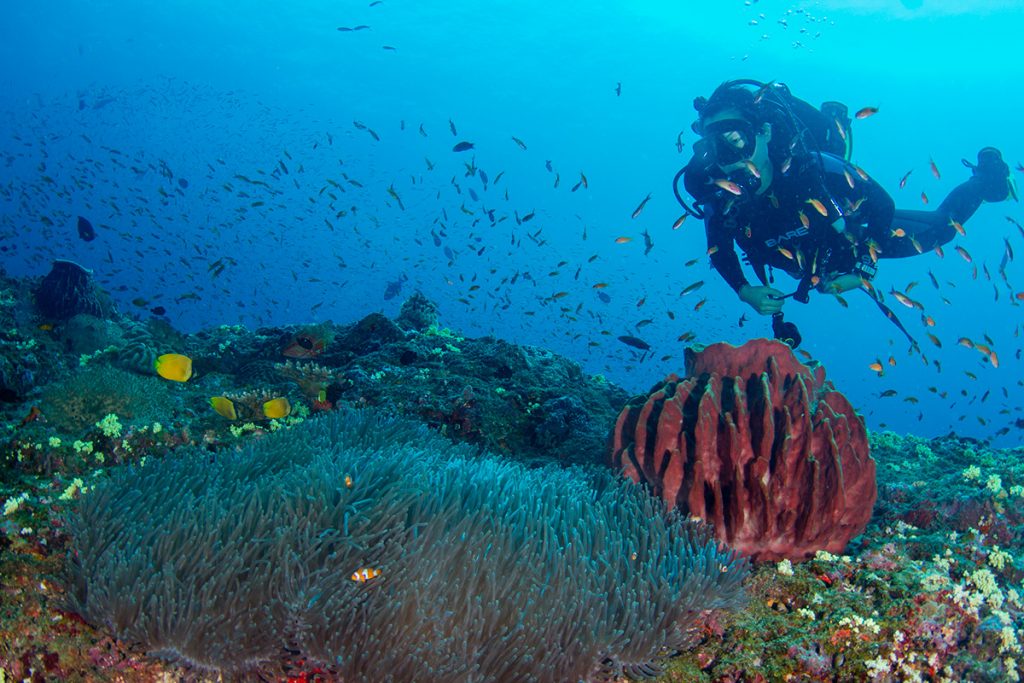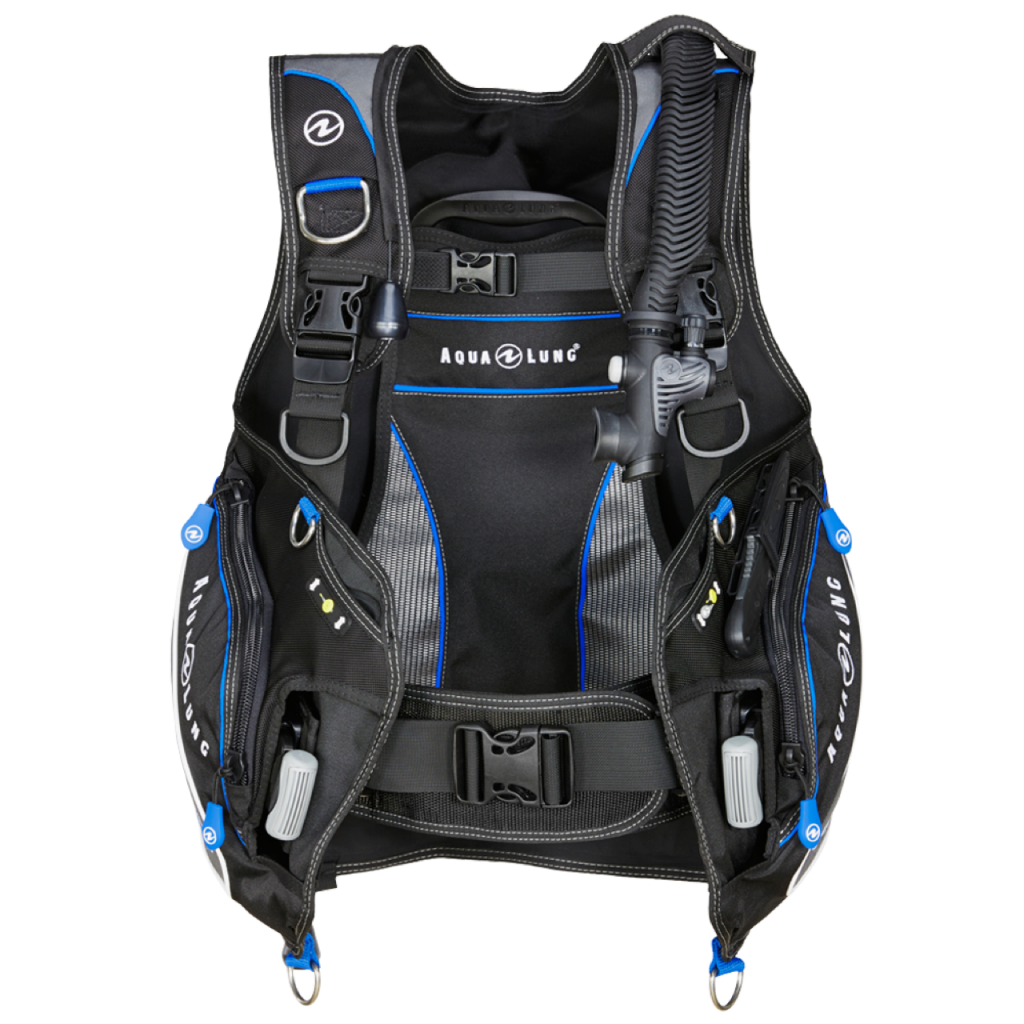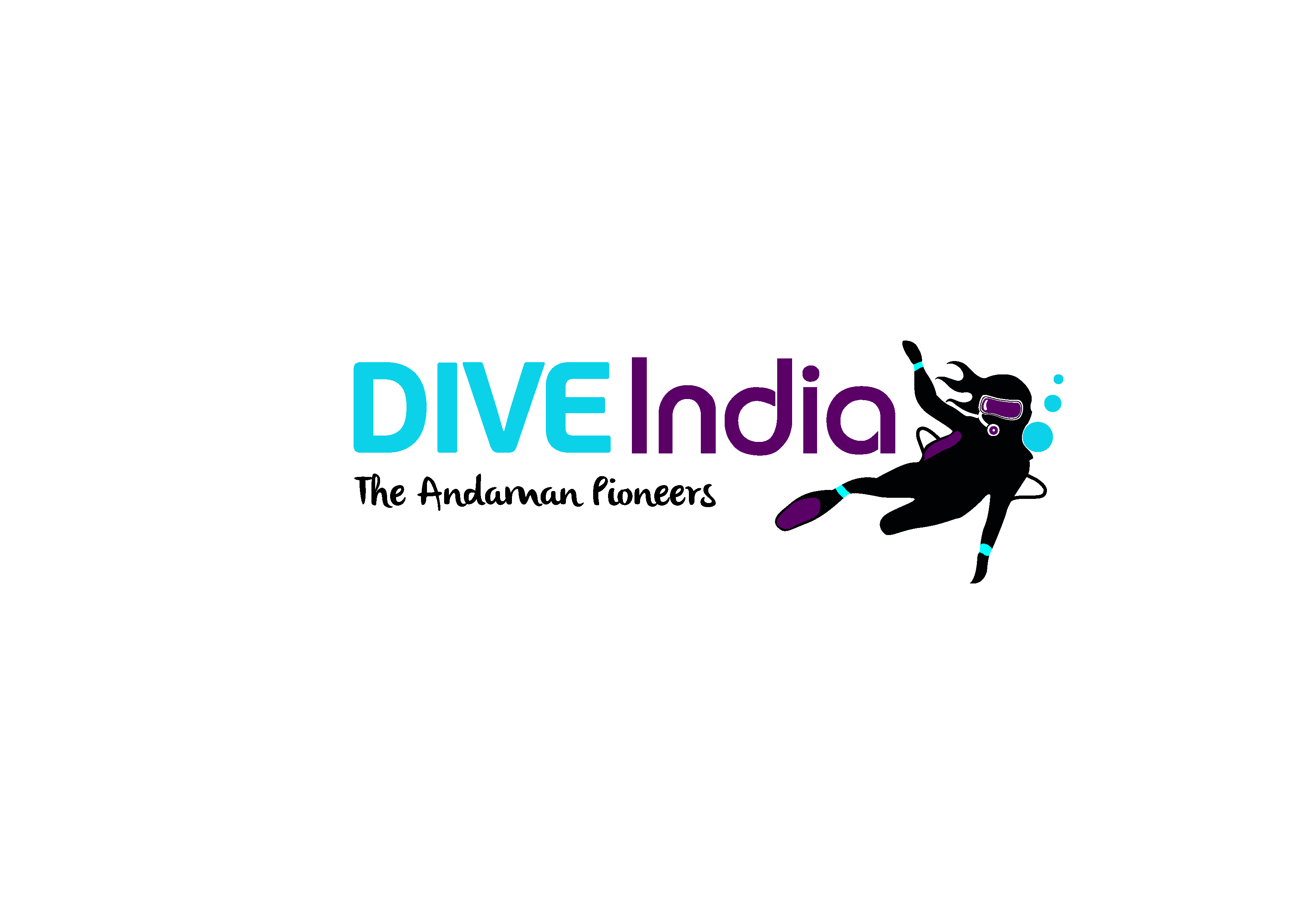
9 Best Places (Dive Sites) to Scuba Dive in 2018
- Maldives
- Raja Ampat
- Komodo
- Sri Lanka
- South Africa
- Egypt
- Maldives
- Andamans
Maldives: A destination that is on every divers bucket list and with good reason. Pretty much THE place to go to for sightings of enigmatic pelagic fish. The mantas of the Maldives are rightly famous, with their playful curiosity making dives with them highly memorable. It doesn’t end there. Visit during the high season for a good chance to spot whale sharks too. Famous dive sites like Maya Thila, Hafsa Thila, Miyaru Kandu cover a range of underwater terrian, from beautiful reefscape, to narrow channels through which currents rush bringing in large predators like grey reef sharks, nurse sharks, devil and eagle rays and other predatory animals.
Accessible to all levels of experience, year round, the experienced diver who wants something different should consider an itinerary that takes in the islands of the Southern atolls.
Raja Ampat: The epicentre of biodiveristy for tropical waters, the numbers for this destination speak for themselves. Called a ‘species factory’, the archipelago boast 1300 species of fish, 600 species of hard coral, 700 species of mollusc, 13 marine mammal species and more. Above water, the varied topography of the islands around MIsool make for extremely photogenic memories. With new species being discovered constantly, Raja Ampat offers plenty of surprises for divers who make the long journery to this part of western Papua.
Consider: If you have the time, try and explore the area around Triton Bay which is slowly getting more and more attention for it’s endless fields of soft coral, and resident pilot whales.
Komodo : Like Raja Ampat, but with the volume turned up to 11. It may not have the same number of species as Raja Ampat, but Komodo makes sure you never forget your dives there by making sure to throw everything possible at you on any given dive. Max currents? Check. Big stuff? Check. Little stuff? Check. All on one dive. Check! Encompassed within one of the largest marine protected areas in the World, there is no end to the number of dive sites that one can explore here.
Consider: Most land based operators and liveaboards operating out of Labuan Bajo are an economical way to explore the Northern side of the park, but spending a little more can get you on a liveboard that will explore the North and Southern side of the park that has extremely different diving and a different range of species.
Sipadan : One of the most famed coral reef drops off in SE Asia, and probably one of the best destinations to observe turtles. Dive along sheer vertical walls that drop to 600 metres while marvelling at the massive schools of barelling baracuda, and trevalli. Keep an eye out for grey reef, and hammerhead sharks at depth, and then on your ascent try and keep a track of the number of turtles you see. Finish your dives by listening out for the huge school of bumphead parrot fish crunching through acres and acres of gorgeous coral coral reef.
It’s isn’t all just about Sipadan though, the surrounding islands of Mabul, Kapalai, Mantabuan and Sibuan offer avid divers the choice of relaxed dives where they can check off their macro species sightings, as well as some speedy drift dives over gentle sloping reef.
Sri Lanka : A dive destination that typically isn’t on most people’s radar, the best diving is on the west coast, and solely focused on wrecks. Dive amongst the wrecks of modern cargo carriers, peep through the port holes of historic World War 1 & 2 wrecks, swim through the skeletal remains of ships that haven’t even been identified. It’s isn’t all just lumps of old metal though. The richness of the Arabian Sea means that these dive sites have healthy resident fish populations, as well as beautiful soft coral colonies. In recent years, there has also been an increase in whale shark sightings too, all of which make the short hop over to this gorgeous island worthwhile.
South Africa : Possibly, THE destination to go to for sightings of enigmatic large predators. The diving around Aliwaal Shoal is famous for massive schooling fish populations, resident Ragged Tooth sharks, and the chance to dive with hammerheads, tiger sharks and bull sharks. Come June and July, and the season for the Sardine Run begins. Dubbed the largest show on Earth, this is an incredible natural event that allows divers and snorkellers witness penguins, gannets, sharks, dolphins and whales hunt a bait ball of millions and millions of sardines.
Consider : Exploring the vast coastline of Mozambique, famed for it’s whale shark and manta ray encounters.
Egypt : Reefs, wrecks and pelagics. Three things that Egypt has a lot of. With the choice of land based or liveaboard diving, all to dive sites that boast crystal clear water, this stretch of the Red Sea is a great way to add to your dive count without breaking the bank. Descend the deep walls of Brothers, Daedulus and Elphinstone for a chance to spot hammerhead and oceanic white tip sharks. Sail the northern waters on a wreck specific tour and dive the wrecks of SS Thistlegorm, Roalie Moller, Salem Express, and more. With inumerable dive sites to choose from, the liveaboards here are a great way to get up to 20 odd dives on a trip and give your dive count a huge boost.
Consider : The more adventurous can try a liveaboard in Sudan, the less explored part of the Red Sea.
Bali : It may not have the bucket destination cachet like Komodo or Raja Ampat, but what Bali does have going for it is easy access from India, a seemingly endless amount of choice of accommodation and dining options to suit all budgets, and by our reckoning the prize for the most varied diving you can do in a week. The waters of Padang Bai are great for courses, and fun divers looking to sight macro and wide angle classics. A short van drive to Amed lets you walk into the famous USS Liberty wreck dive and glimpse a piece of World War 2 history. Boat across to Nusa Penida and you may get lucky with sightings of Mola Mola and Manta rays. Drift along the coralline walls of Nusa Lembongan in strong oceanic currents. ONce done, return to your luxurious resort and while away time doing as you please. Preferably with a cold Bintang beer. 😉
Andamans: We’ll be up front: When it comes to any particular type of diving, there are better places in the world. Macro? Go to Lembeh. Big fish? Go to South Africa. Sharks and turtles? Go to Sipadan (and we do – join our Outbound trips to these destinations!). However, when it comes to having everything in one place, the Andamans are very hard to beat. You get a lot of macro, including exotics like mimic octopus and ambon scorpionfish; large schools of pelagics (tuna, trevally and more) as well as regular sightings of sharks and mantas. In addition, the reefs are home to a very high variety of marine life – despite being physically close to Thailand, the marine life here is more similar to that of Indonesia, which isn’t surprising, as the Andamans are geographically an extension of those islands.
And because there is no large-scale commercial fishing here, not only do you get variety, you get quantity as well. You won’t see a few barracudas – you’ll see a school of hundred. Thirty or forty trevally are a regular sight swooping through the reefs in attack formation. And the biomass on the reefs is amazing as well – rivers of snapper and fusiliers flowing around divers on many of the sites. It is the sort of diving where there is stuff to see the entire dive. And because the reefs are always changing, the sites are very repeatable. You can go to the same site for 5 days in a row and have a different dive each day!




















